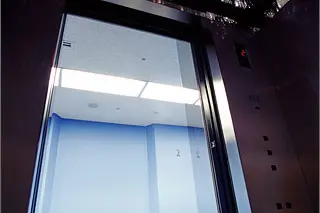Japanese-made elevators are the fastest in the world. They are so smooth that if you were to place a coin on its edge at the start of a ride, it would still be standing when you got to the top. And they are so quiet that speedometers are included so passengers will know they are moving.
Velocity
The three $4.3 million high-speed elevators (out of 79) in the Yokohama Landmark Tower, a 70-story office, shopping, restaurant, and hotel complex, are the fastest on the planet, moving at more than 41 vertical feet, or four floors, per second. A bottom-to-top trip takes less than a minute.
Brakes
How do you stop a runaway high-speed elevator? The same way you stop any elevator, except with stronger equipment. If a cab exceeds 53 feet per second, ceramic brakes that can withstand more than 1,800 degrees Fahrenheit deploy automatically. If the elevator still reaches ...















